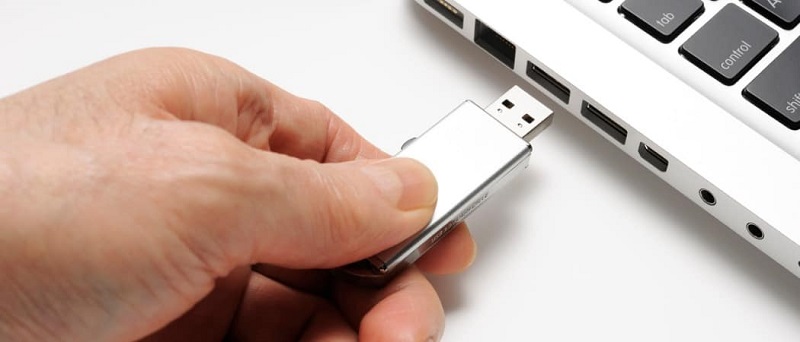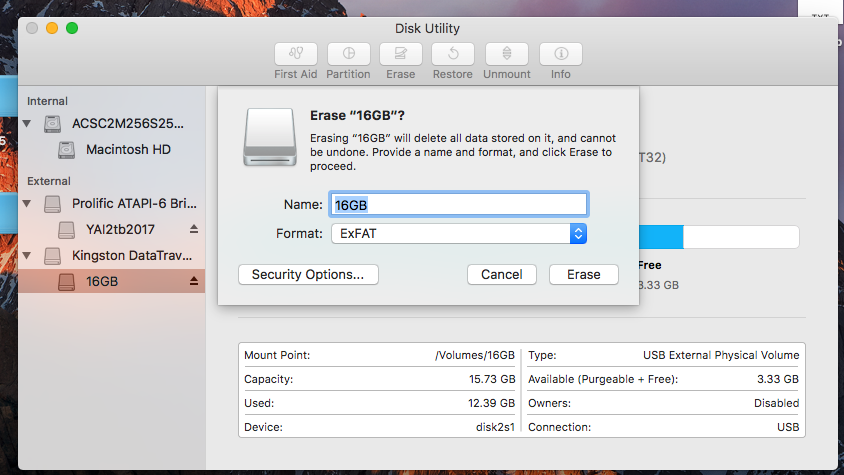

- #Format flash drive to ntfs on mac for mac
- #Format flash drive to ntfs on mac mac os
- #Format flash drive to ntfs on mac install
- #Format flash drive to ntfs on mac portable
- #Format flash drive to ntfs on mac mac
MS-DOS (FAT): Windows and Mac computer can read and write files from this file system drive, but it only allows file transfer of size 4GB and below.ĮxFAT: Windows and Mac computer can read and write such file system drive, and supports the file size larger than 4GB.

#Format flash drive to ntfs on mac mac os
Mac OS Extended (Journaled) and Mac OS Extended (Case-sensitive, Journaled): Mac computer and read and write files from the driver formatted in this way, but Windows-running computers can only read files from this type drive. Here you can select "ExFAT" or "MS-DOS (FAT)".Īfter confirming that, click "Erase" to format the NTFS drive immediately. Select your NTFS disk from the left sidebar, and click the "Erase" tab on the top menu > Then a pop-up window will appear, where you should give a new name of the NTFS disk optionally and select the format from the drop-down list. Insert the NTFS disk into your computer, and run Disk Utility (Go to Applications > Utilities > Disk Utility.). Step 1 Insert the NTFS disk into computer Then, follow the steps below to format the NTFS drive. (Data lost after format? Recover data from formatted drive here.) Note : Formatting the NTFS disk will erase all data and you should backup data from the NTFS disk to your Windows computer firstly. So, for solving the problem, the basic solution to this problem is changing the file system from NTFS to Mac compatible formats by formatting NTFS. The basic reason for not writing to NTFS on Mac is the incompatible file system. Format NTFS to Enable NTFS Writing on Mac Apple's Experimental NTFS-Write Support (Not Recommended)

#Format flash drive to ntfs on mac for mac
Write to NTFS for Mac with Apeaksoft Mac Cleaner Directly Mount Microsoft NTFS Driver for Mac for Read-Write Access In this guide, you will discover 4 solutions to deal with the dilemma and enable NTFS to write for Mac. However, the proprietary is designed to open and read files for Mac, instead of copy files to the NTFS format disk. Mac Write to NTFSĪs the default file system on Windows computer, NTFS format is created for quick plug and file transfer for Windows users. Yes, Mac cannot write to NTFS formatted drive. However, when you insert the Windows NTFS drive into Mac, you must have found that you can only read the NTFS drive, but cannot write data into the drive.
#Format flash drive to ntfs on mac portable
Voilà! Boot Disk Creator has initialized and formatted your USB to NTFS format and it’s ready for use.When switching files between Windows and Mac, the portable external drive is the most frequently-used tool. In a few moments, your USB should be Initialised. But fear not, click on Initialize Disk.īear in mind that performing disk initialization will delete all of the data on your drive!Ī new small window should appear where you can see your previously invisible USB. After that, run Boot Disk Creator.Īs you can see from our example Boot Disk Creator doesn’t see the USB drive.
#Format flash drive to ntfs on mac install
The problem is that your USB device needs to be initialized which can be done quite easily with LSoft’s Boot Disk Creator which comes embedded within BootDisk.ĭownload and install BootDisk. If you have encountered this error while trying to format your USB have no worries we got you covered. Windows Was Unable To Complete The Format/ Please Insert a Disk Into USB Drive Error. If you have formatted your USB using Better Performance policy to remove a device safely without data loss use a "safely remove hardware" procedure or Eject function from Windows Explorer. Open My Computer > Select Format on the flash drive.Ĭhoose NTFS in the File System drop-down box.Ĭlick the Start button and wait until finished. This means that you will have to use Safely Remove Hardware notification to disconnect your device safely.Ĭhoose the setting you think it will suit your needs best and click OK. As long as you are not moving any data from or to it of course.īetter performance setting enables write caching in Windows. With Quick Removal, you can remove your USB at any time without damaging your files on it. By default, the setting for formatting your drive is set to Quick Removal. Right-click the drive and select Properties. Open the Device Manager and find your USB drive under the Disk Drives heading. To enable NTFS on your USB Flash Drive drive (USB Flash Memory) click on My Computer (This PC) and select Manage. However, there are some settings one needs to check before formatting it. How do I format a USB Flash Drive to NTFS file system?įormatting a USB drive is an easy and straightforward process.


 0 kommentar(er)
0 kommentar(er)
